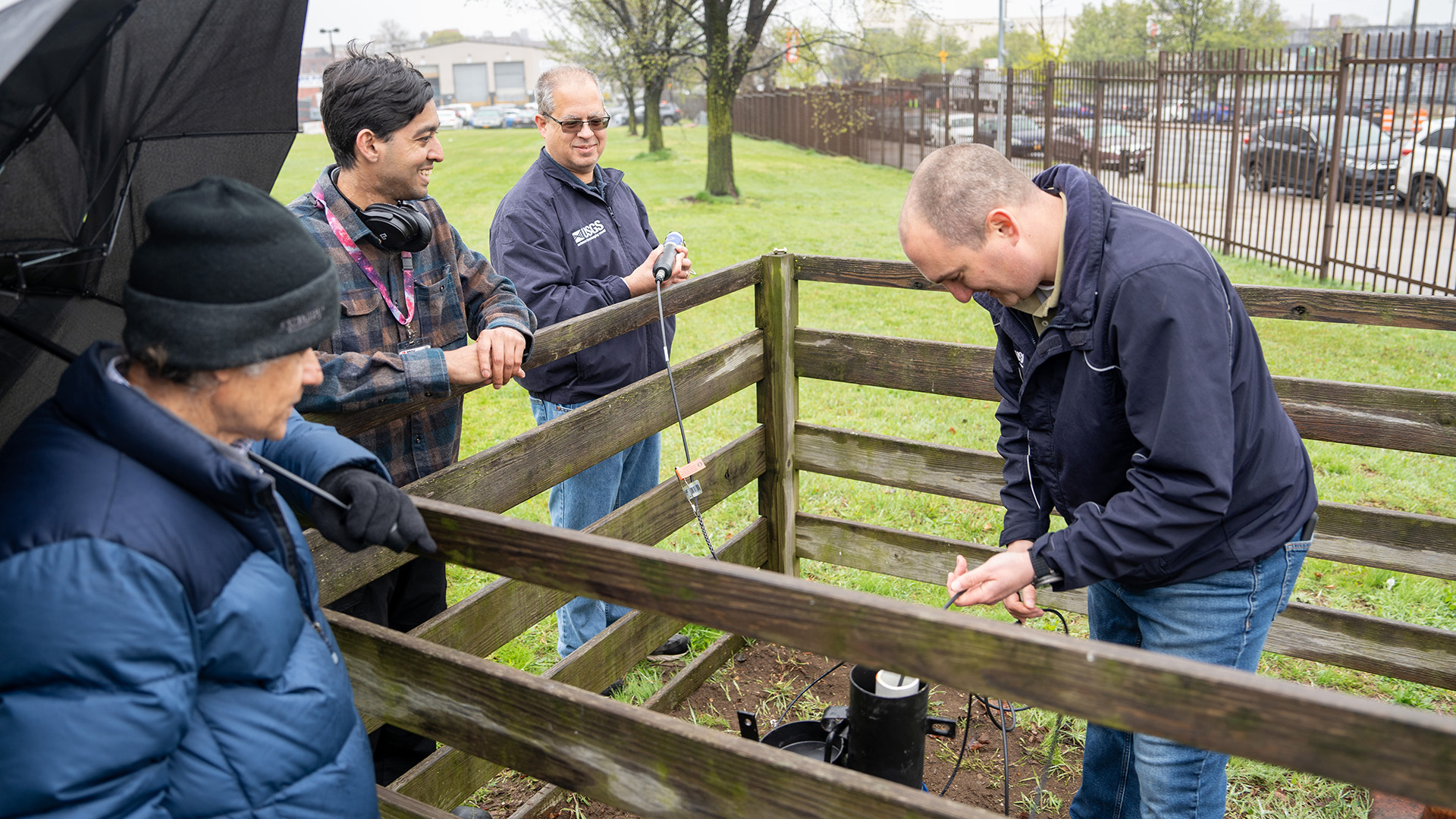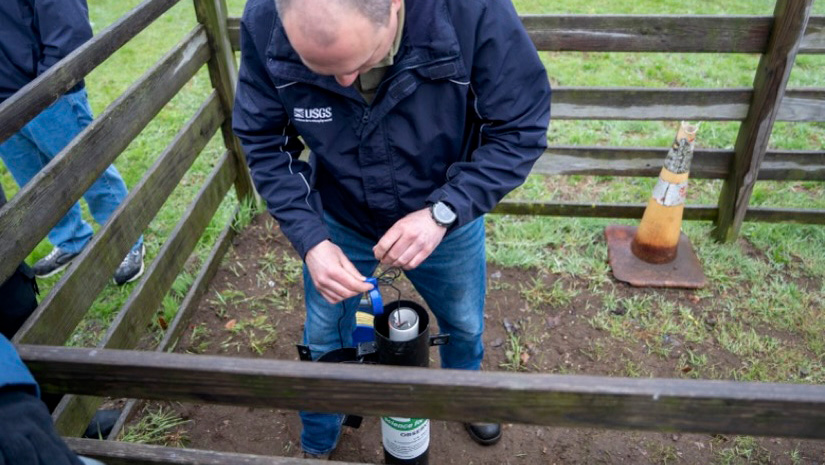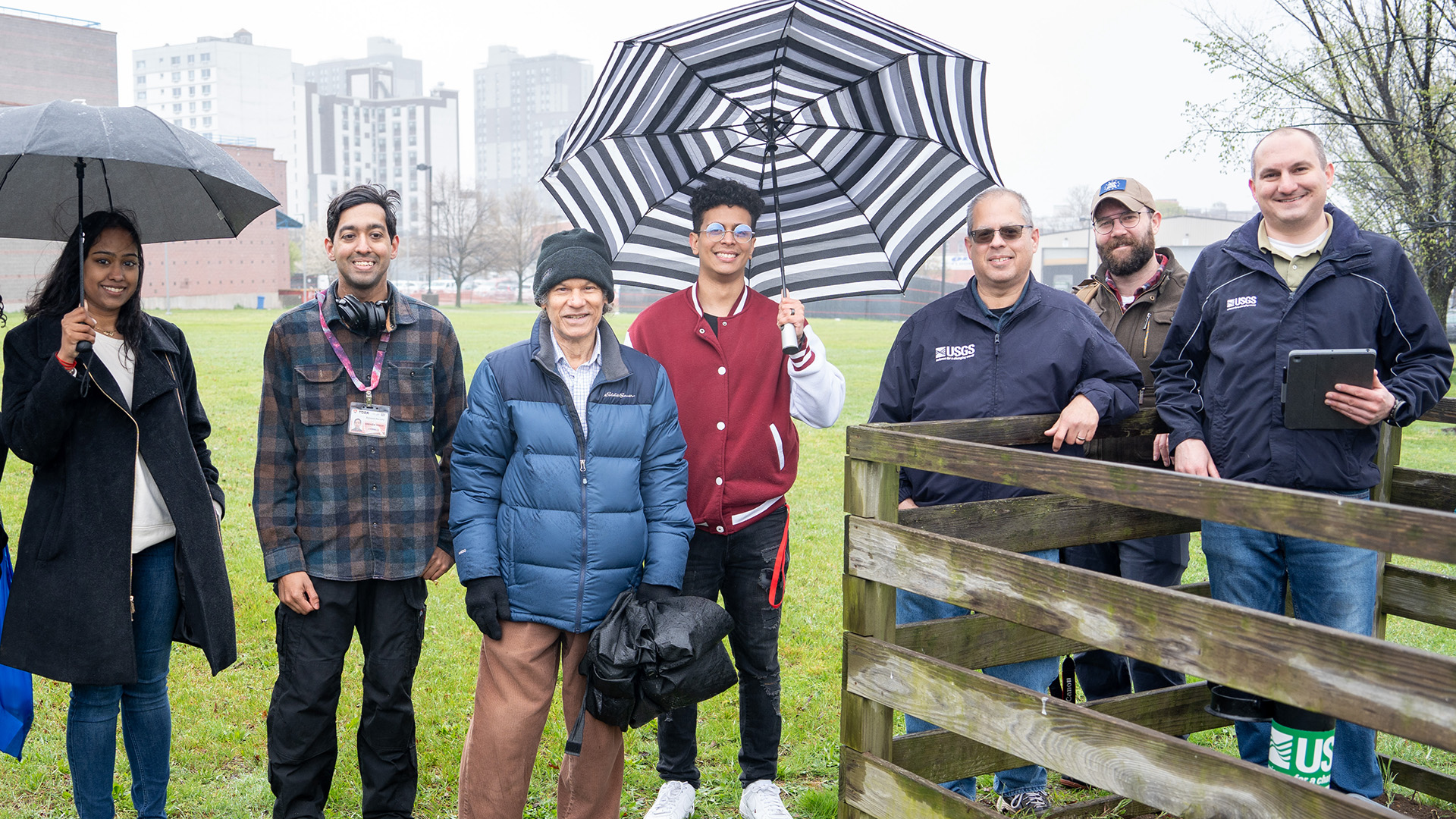Groundwater Monitoring Well at York College is Back in Operation, again
By Dr. Nazrul Khandaker
As the celebration of Earth Month comes to a close, the replacement of the exterior portion of the monitoring well located on our PAC property at the corner of Guy R. Brewer and Liberty Avenue presented a great opportunity to engage York students in real-world environmental issues.
With the direct help of the United States Geological Survey (USGS) and the New York City Department of Environmental Protection (NYCDEP), one of the three monitoring wells drilled into the unconsolidated sediments was upgraded this month with new tools to transmit up-to-the-minute water table data. The new setup will constantly transmit data every 15 minutes.

The primary goal is to observe the water table fluctuation that may be caused by excessive precipitation, water withdrawal, or drought. Needless to say, the current climate change scenarios are contemplated to exacerbate the overall groundwater condition in southeast Queens. This has a tremendous bearing on flooding issues in southeast Queens.
Three water table monitoring wells drilled inside the green and unpaved portion of the faculty parking lot in April 2004 provided useful, up-to-the-minute water-related information until 2013. Due to budgetary constraints, the online dissemination of data was discontinued.
Today, ushers in the resumption of online transmission of data for both academic pursuits and building community awareness. It is quite timely to note that the current reopening of the well will particularly benefit the geology discipline in its implementation of the infrastructure-related academic research funding, which trains and builds the future workforce.
Thanks to Onyekachi Akoma, York’s executive director of facilities & planning buildings and grounds, for facilitating and enabling USGS personnel visits to our campus and installing new tools to obtain water data. Hydrogeologists from the USGS, Mike Como and Ron Busciolano, and Doug Greeley (a retired engineer from the NYCDEP; currently vice president, Malcolm Pirnie-Arcadis) worked diligently to reinstall new tools to make the well operational again. Dr. Khandaker, Andrew Singh and Omadevi Singh supervised USGS’s visit this month.

These installed wells previously supplied grand opportunities to geology and environmental health science students to retrieve water data for course-related tasks, enhance their applied knowledge, and prepare them for workforce or higher learning endeavors. Numerous students have already benefited from these wells as they utilized crucial data to initiate and accomplish research and present at national conferences like the Geological Society of America. Several notable York graduates who later became successful hydrogeologists include Zarine Ali (EPA), Malek Shami (EPA), Charren Cabaroy (EPA), and Thakur Chaturgan (Brown and Caldwell Environmental Engineering).
Lastly, one important fact, Dr. Stan Schleifer (retired geology professor) and Dr. Nazrul Khandaker (geology discipline coordinator) were part of the original team responsible for convincing USGS and NYCDEP to consider putting three shallow monitoring wells to determine water table level in 2004. Prior to 1996, groundwater in southeast Queens was the primary source of domestic, municipal, and industrial water supply. EPA raised concerns in 1996 about the quality of the groundwater, as it recorded excessive chemical pollutants in the groundwater. Since 1996, the water supply has been based on NYCDEP provided surface water. Cessation of groundwater withdrawal ultimately caused the water table to rise significantly, and, in many instances, local flooding ensued. However, with the recent improvement of the old storm drainage and sewage system in southeast Queens, the street flooding situation has been alleviated.

